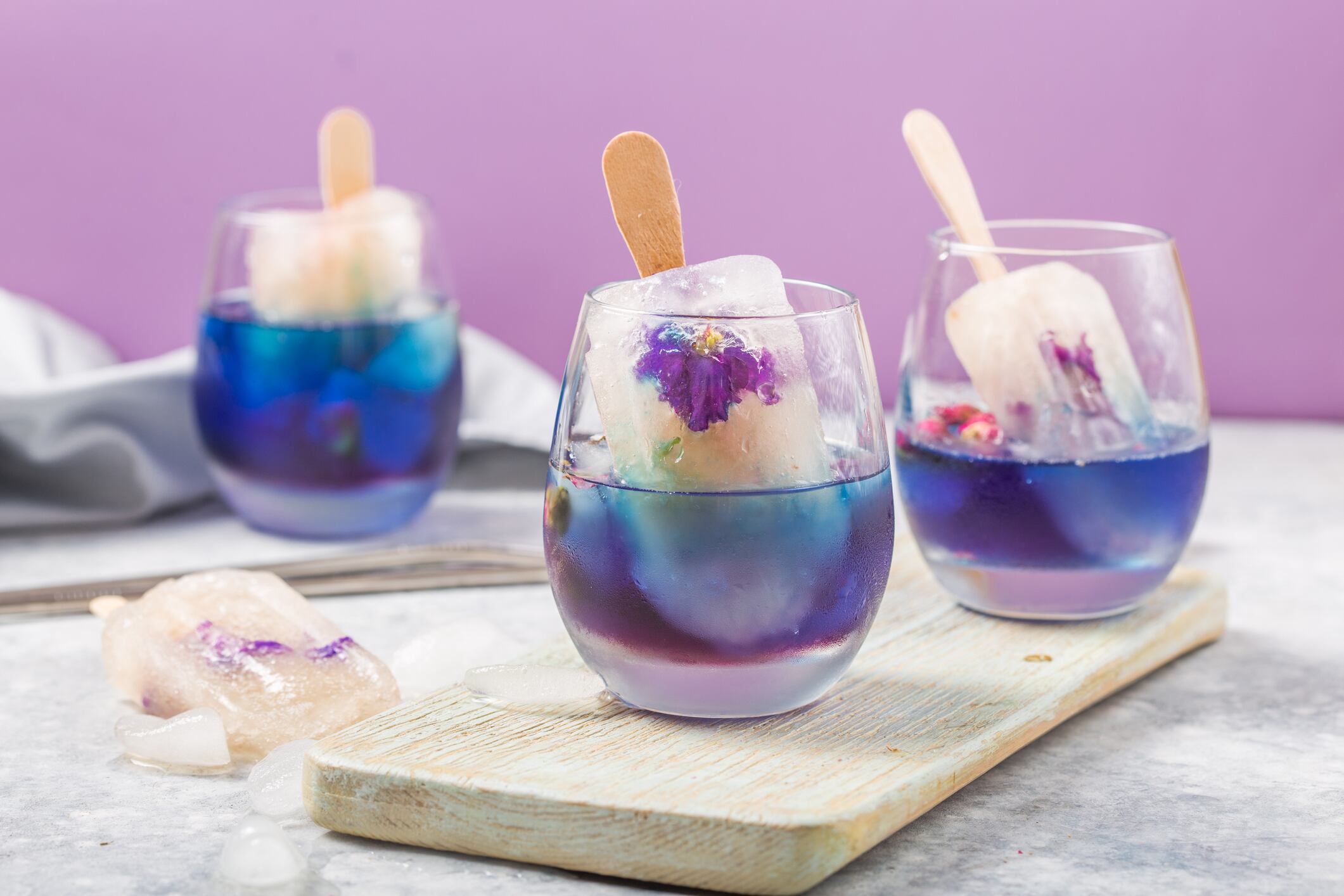Colours can convey messages such as freshness, indulgence, or health – attributes that shape first impressions and consumer expectations.
The shift is most apparent in the beverages and confectionary categories.
“The beverage category has the biggest space for innovation because there are many subsegments. Bakery and confectionery are the other categories where colour innovation has a lot of potential,” said Lee Moh Heng, market development manager for APAC at GNT – a Dutch firm specialising in natural food colours made from fruit, vegetables, plants, seeds and algae.
Savoury foods have lesser leeway with colours.
“Savoury foods have a more limited colour spectrum to work with. Let’s put it this way – nobody wants a blue burger patty, but blue is perfectly fine in nonya kueh,” explained Lee.
She also shared that brands are no longer using plant-based colouring merely as substitutes for synthetics, but as tools to engage consumers on a deeper sensory level
Emotional pull
Brands are leveraging natural colourings to align with the dominant consumer focus on sustainability and wellness.
“This aligns with the growing clean-label and wellness movement, especially among Gen Z, millennials, and the silver generation. The appeal spans a broad demographic,” said Lee.
Lee observes these trends based on GNT’s portfolio, which includes brands offering juices, yoghurts, and candies.
“Our EXBERRY colourings are widely used across global and regional brands in functional, beverage and dairy products, plant based dairy alternatives or plant-based alternatives confectionary and gummy bakery and snacks,” she added.
This aligns with developments around the world, where regulators and consumers are pushing for a shift away from synthetic additives, although the demand for visual aesthetics remain.
While consumers are drawn to natural products, they still expect them to look visually appealing.
Some natural products, such as apple juice, can appear cloudy and lacklustre. The base colour of plant-based dairy alternatives also tend to be pale or greyish without colour enhancement.
In such cases, natural colourings can create a vibrant appetising appearance while still fitting clean-label or plant-based criteria.
“Natural colourings can elevate the appearance without undermining the product’s clean-label appeal, since they’re still plant-derived – from sources like carrots or berries,” said Lee.
It is therefore crucial for brands to strike a balance between form and functionality.
Functionality meets formulation
Beyond aesthetics and consumer psychology, plant-based colours are also being selected based on performance in complex formulations – particularly in functional foods, which may contain plant extracts, probiotics or high acidity that affect colour stability.
“We’re seeing more brands combine functionality with visual appeal. For instance, if a product contains vitamin C or probiotics, the colour must remain stable under those conditions. There’s now more collaboration between R&D teams and colour experts to ensure both functionality and appearance are optimised,” said Lee.
She noted that it is important for food colourings to remain stable under challenging conditions – such as in baked goods or UHT dairy – where higher temperatures can degrade natural pigments.
She added that transitioning from synthetic to natural colours requires precise colour matching to meet consumer expectations, especially across variables like temperature, pH, and processing conditions.
She highlighted that maintaining stability is particularly challenging in transparent or acidic beverages, where light exposure and heat treatments during shelf-life extension can degrade the colour. To address this, it is crucial for brands to work closely with technical support to ensure visual consistency and performance.
Colours communicate and convert
Functional beverages, juice blends, plant-based alternatives, and low-sugar drinks are among the top growth areas for natural colours in the APAC region, according to GNT.
“Looking at our project pipeline and past successes – without naming specific brands – I’d say the first key area is functional beverages. This is where health, wellness, and vibrant colours intersect. Products like vitamin water or herbal infusions, which even cross over into the bubble tea space, are prime examples,” said Lee.
These types of beverages benefit from the use of natural colours, especially as consumers seek ‘better-for-you’ options. Natural colours align well with wellness-focused positioning.
“The next category would be juices and plant-based alternatives, particularly those aimed at children or families – groups that tend to prioritise clean-label products. Ingredients derived from fruits and vegetables help enhance that natural, wholesome image,” added Lee.
“Ready-to-drink teas, kombucha, and sparkling waters are strong candidates too. These are categories where low-sugar innovation is happening, and natural colours help reinforce a pure, minimalistic image,” Lee said.
“In these cases, the colour doesn’t need to be bold or vibrant. Even a subtle hint of colour can convey simplicity, cleanliness, and purity.”


